loki100
Posts: 10920
Joined: 10/20/2012
From: Utlima Thule
Status: offline

|
31 January 1942
This update is based on the on-map situation at the end of the T32.
Background
I’ll change the reporting structure a bit so as to discuss each of the main sectors across the eight turns rather than a turn by turn summary.
Leningrad
By early January the newly created Volkhov Front had made gains and had mostly cleared the Germans from the shores of Lake Ladoga. A series of German attacks from 5-18 January 1942 stopped this local offensive and drove Soviet forces back almost to their starting lines. However, in turn this exhausted the local German forces and by 24 January, Volkhov Front had managed a secure land connection to Leningrad.
[key issue on this sector – you can only take what is offered, its really hard to build up critical mass given the supply problems]
Kalinin-Rzhev
This sector attacked on 14 December and gained a small breakthrough south of Torzhok with this steadily escalating into a clear breakthrough by 27 December. Linked with the gains by Western Front this started to threaten Rzhev. Soviet cavalry managed to briefly liberate the city on 3 January 1942 as the Germans pulled back under pressure from Western Front. The city was lost to a German counterattack but then retaken on 11 January as the Germans fell back.
After a short rest, elements of the Kalinin Front managed to break the German lines south of Rzhev encircling several German divisions.
[key issue on this sector – a non-assault front simply needs to stop operations every 2-3 turns]
Kaluga-Tula-Orel
The first week of the Soviet counter-attack was limited to this sector. Western Front made some limited gains around Podolsk and Bryansk Front managed to break through the weakly held German front to the east of Tula. By 20 December fighting was going on all along this sector but with limited gains.
By the 27 December, both Fronts were in action across the entire line with Western Front breaking the German defensive line and Bryansk Front regaining Tula.
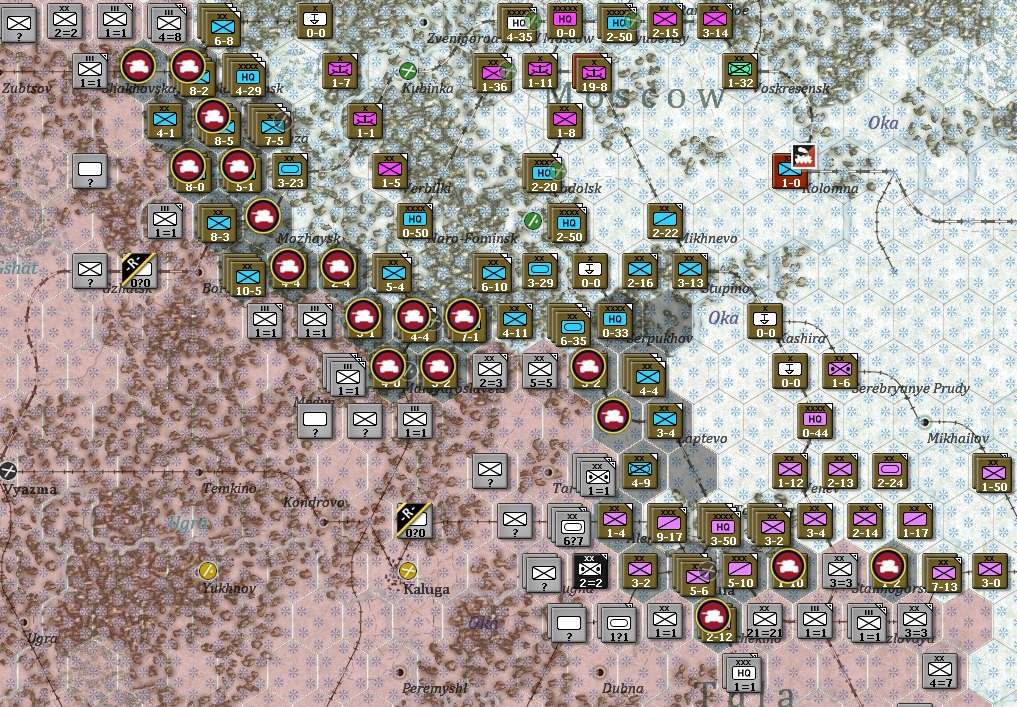
Western Front sustained this pressure into early January [1] but Bryansk Front was unable to move beyond Tula. By 10 January, AGC was starting to crumble under the sustained pressure [2] but both Western and Bryansk Fronts (this is now set as an Assault Front too) were becoming exhausted. This led to the liberation of Kaluga by 17 January.

[3]
[key issue here – Assault fronts recover quickly and have the MP to exploit gaps. Also the Soviets can probably afford to use echelon targets on a single sector – and given the importance of Moscow, this is a good choice]
The South
10 January saw the first significant gains on this sector. Early fighting had been localised as the Soviets lacked the forces to generate a sustained attack. However, elements of Southern Front managed to liberate Rostov and South-Western Front had regained most of the critical rail line running south of Voronezh. Over the following weeks, the Germans steadily pulled back from their positions to the east of Rostov.
[key issue here – regaining Rostov is essential for the VP score, really nothing else matters and any gains are likely to be lost in Spring-Summer 1942 in any case].
T32: 24 January 1942
At Leningrad, Volkhov Front has managed to secure a reasonably deep defensive belt covering Lake Ladoga.
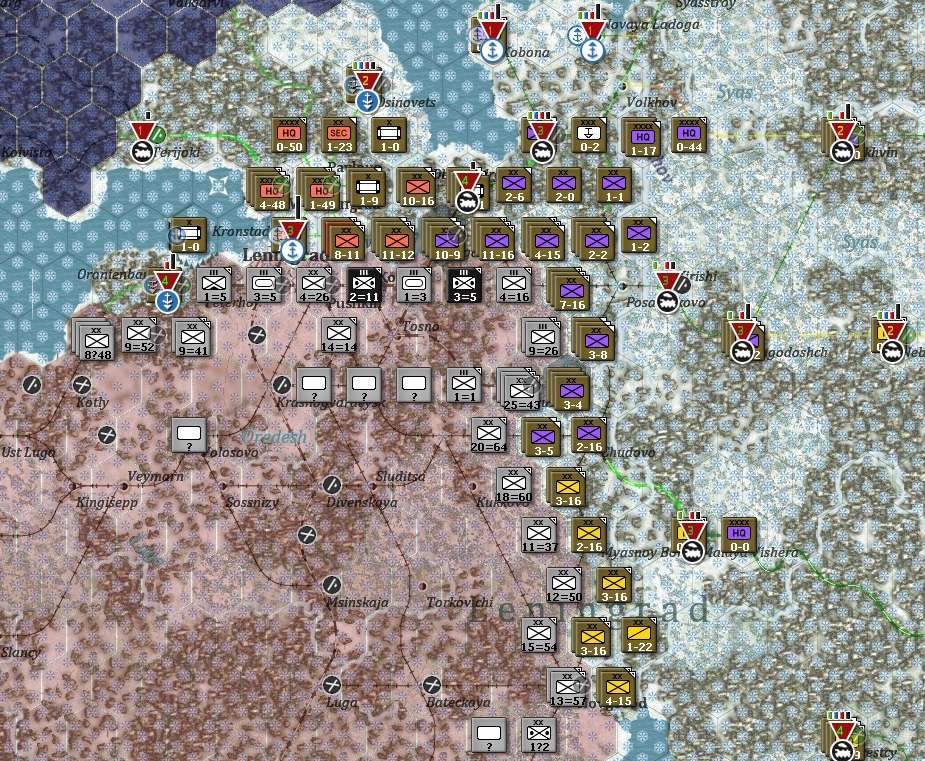
Several things worth noting. At the moment this sector has some of my best commanders as protecting Leningrad has been a major goal. Supply remains a real challenge. The dual track rail via Kalinin is helpful but most of the freight is being claimed further east. The main supply routes are the 2 single track rails to the north. One practical problem is it becomes very hard to refit under-strength formations (we’ll talk about logistics in the related post).
To help, I am using one of my NKPS formations. At this point it is repairing the rails next to Shisselburg (as it is even harder to push supply and replacements into Leningrad) but it will create a ‘super-depot’ soon.
Situation at Moscow is better.
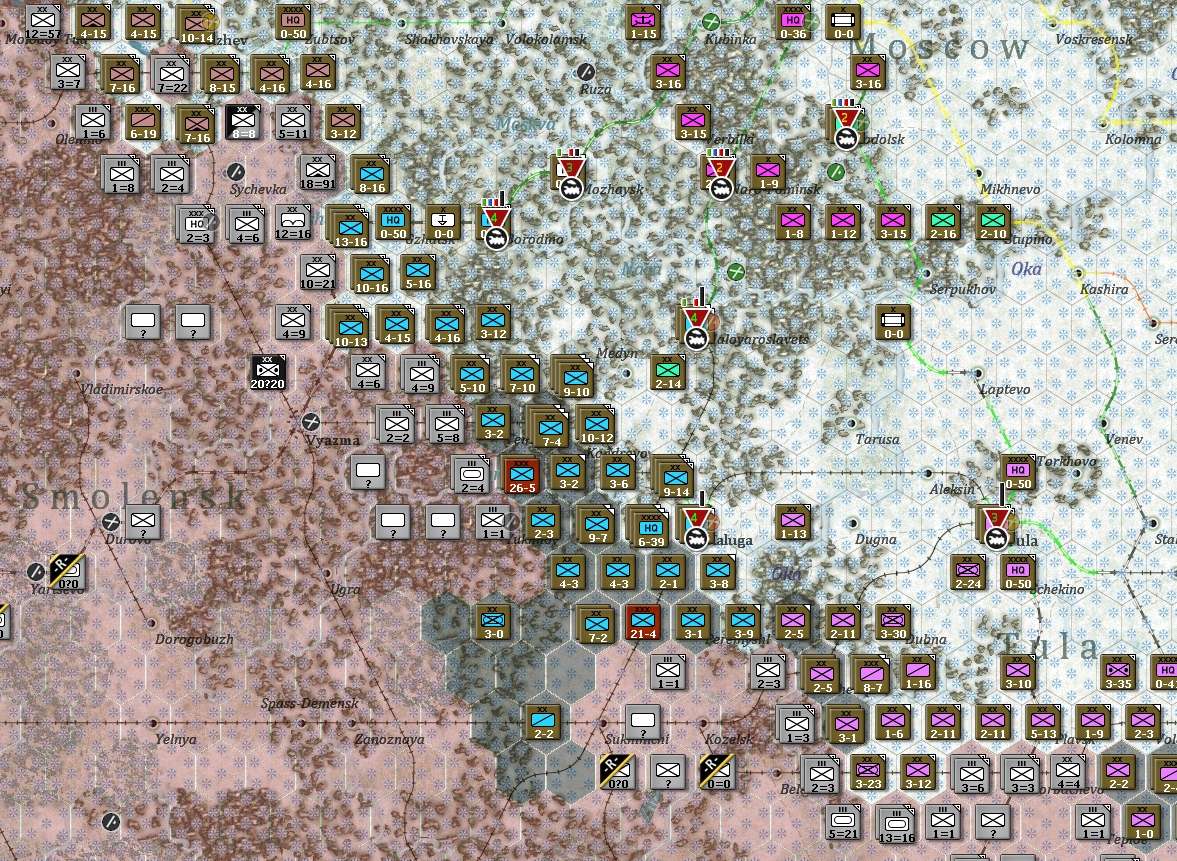
Following my capture of Kaluga the local German lines fell apart. As a reminder, at this stage of the war well supplied Mech Divisions (the few you have left) can be very mobile (if vulnerable in combat). Allow them to build up their CPP (to protect the MP) and they can exploit this sort of gap.
To the south, there is very little happening. In practice this sector is a potential death trap when the Germans attack again in 1942 so anything I take, I’ll lose. The units from Iran are reinforcing Southern Front and may make it possible to briefly retake Stalino.
Since I am cautious (or just pessimistic), a fortification line is being constructed at Stalingrad [4].
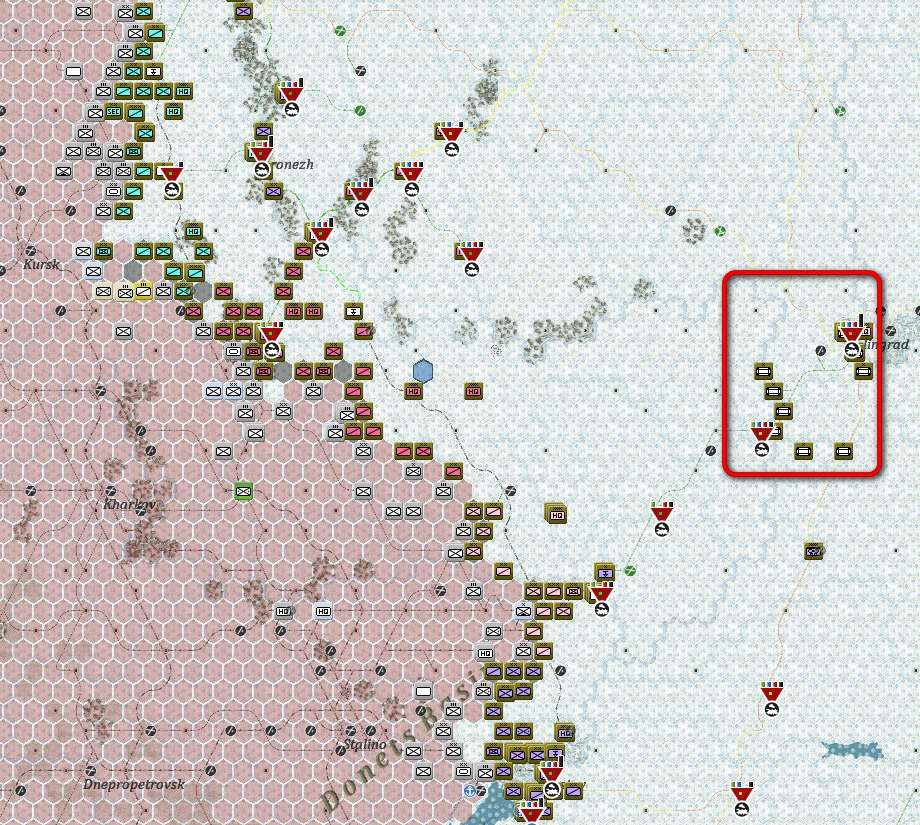
The order of battle reflects the severe problems the Germans have in bringing up replacements and the impact of the weather on their ready tanks.
I’m struggling to keep my Fronts below their command capacity, which is why several MDs are in use. At Moscow the Moscow MD and the MDZ are handy as their formations can dig entrenchments over level 1 which means I can set up prepared lines just in case.
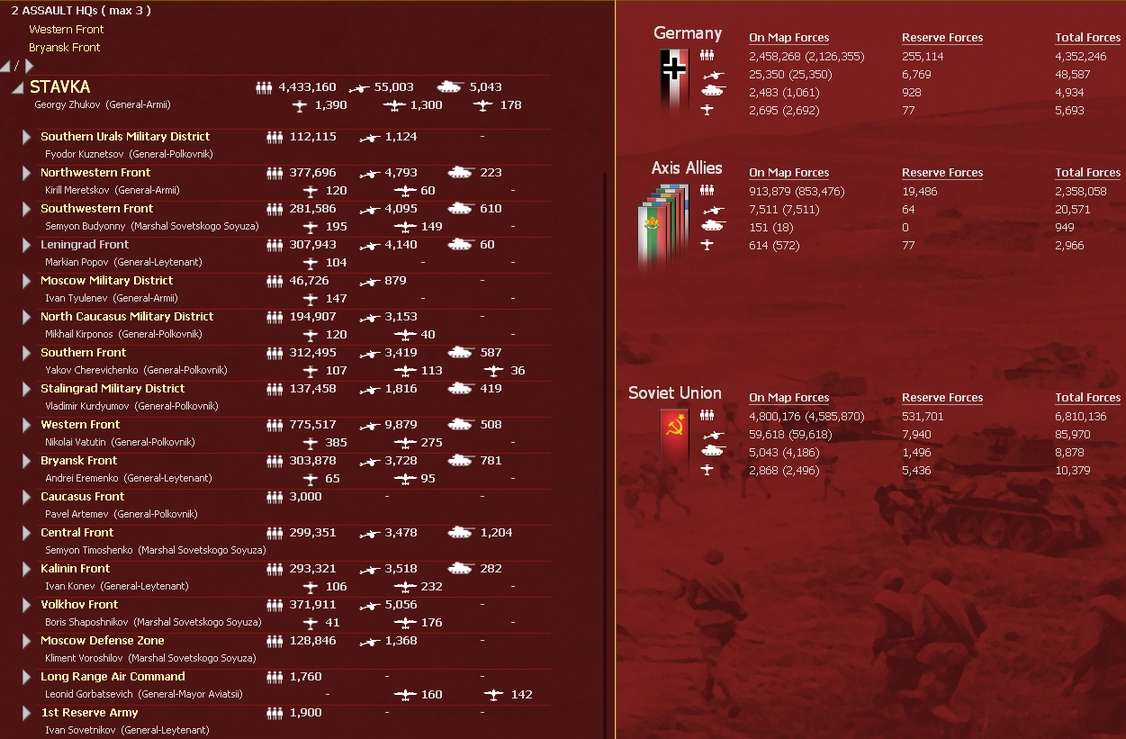
A few things worth noting. The Soviets start to gain a cluster of ‘Reserve’ Armies at this stage. As such they are not much use (their low TOE hampers their command effectiveness) but can still be placed on depots to improve their capacity. Also many flip to normal armies (some even to Guards) as 1942 progresses. So as with the at-start Corps, don’t disband them.
I could have 3 assault fronts but am only using 2. In part as I am still short of admin pts (I had 9 left at the end of that turn) and the 20 cost is a real drain but also I’m not sure where I want to place this. At the moment the ability to dig in over level 1 forts is attractive.
Losses.

Again a few things to note. While the Axis losses are high, most are disabled (the weather effect) and a large number of them will return come the Spring. This might give German players a hint as to how to handle refits from say October onwards. There is relatively little to gain to pushing replacement manpower up to the front line formations given that most will then be sent back as disabled. The time to rest and refit the Ostheer is April-May 1942.
Note I have lost 3.3m men, 2m as permanent losses. At this stage of the war my manpower pool was down to 210,000 (mainly due to refitting all the returning rifle divisions).
To put this in context, I had the equivalent of 238 Rifle Divisions (on map) and 7 of these were Gds (6 in the 2 Corps). 12 Mechanized Divisions were still in action (these will convert to Rifle Divisions fairly soon). 13 Cavalry Corps (the maximum possible) and 26 Cavalry Divisions. As off-map Support Units I have 48 tank brigades (almost all attached to the Cavalry Corps at this stage).
[1] Key here is this is the one sector where I have an operational reserve. An army can attack for 2-3 turns, and then fall back and be replaced. Since it is an ‘assault’ front, I can maintain a relatively high CPP and that not only helps with combat power but also keeps my MP relatively high.
[2] Since it has lost the fort line it is now fighting in the open, the destruction is less related to direct combat losses and more damaged elements due to the winter attrition rules. But those losses can’t be replaced (probably till April-May) as the German logistics system is under severe strain.
[3] Even worn down by fairly constant action, the Gds Rifle Corp is central to these set piece assaults. There, combined with its 3 attached rifle brigades, it contributed 540 of the original 779 CV.
[4] Something to watch out for is that forts over level 2 are very expensive in terms of their supply cost (as are air bases over level 1). So can only be built in areas with good supply – or very slowly. Some of those will not be really ready (spoiler) for when they are needed in the summer of 1942.
_____________________________
|
 Printable Version
Printable Version













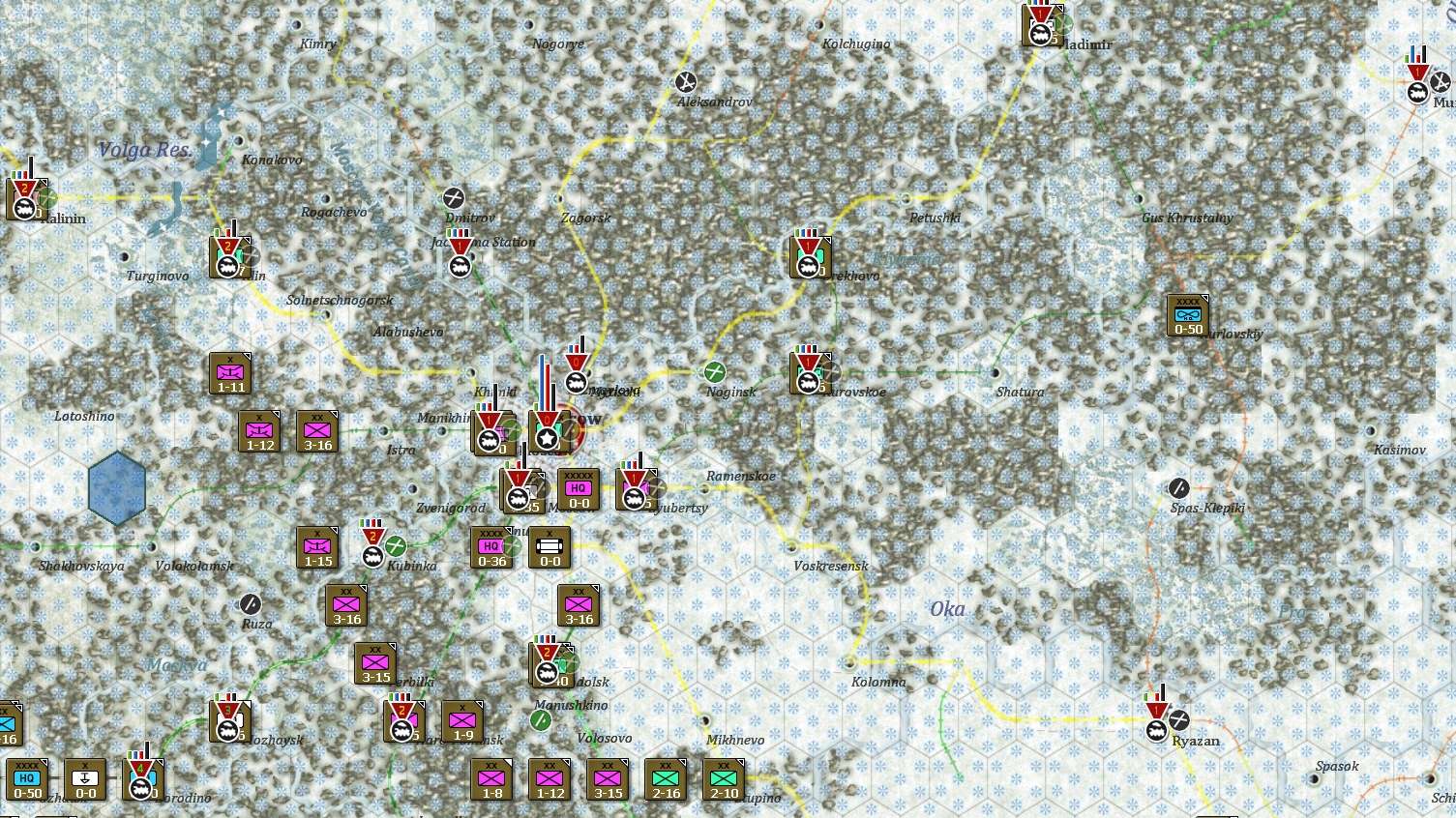
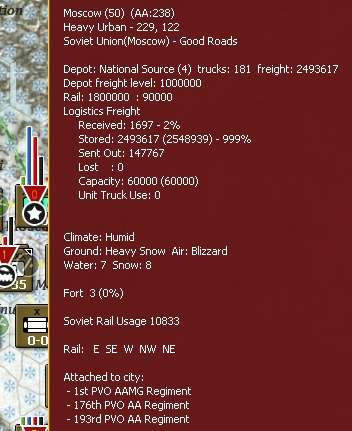


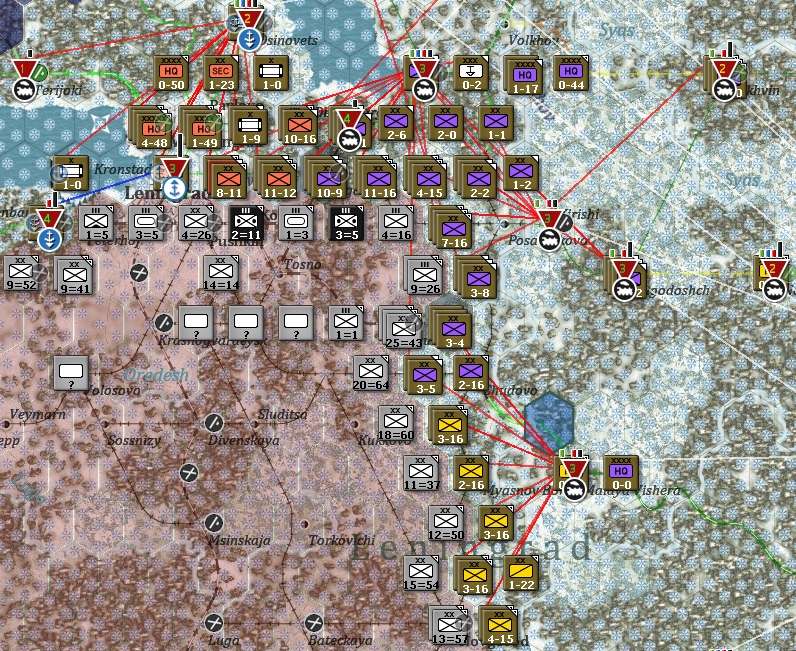
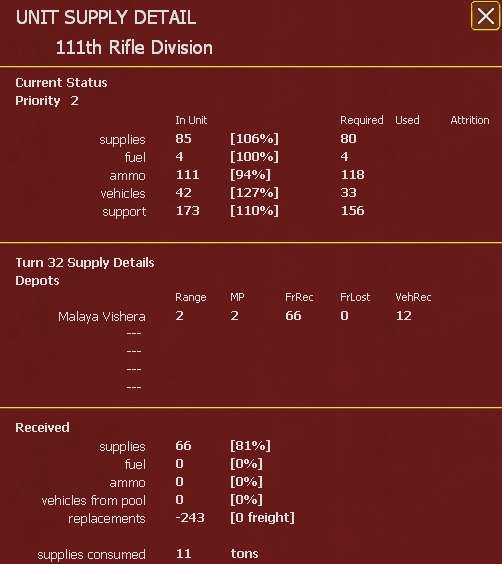



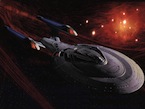
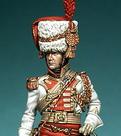
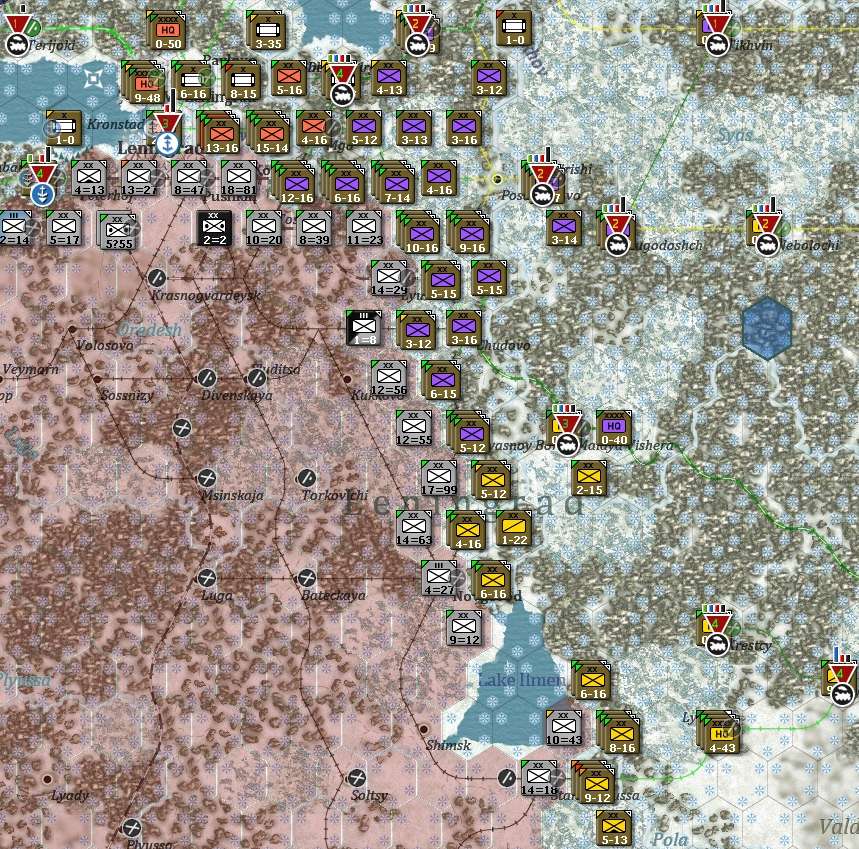
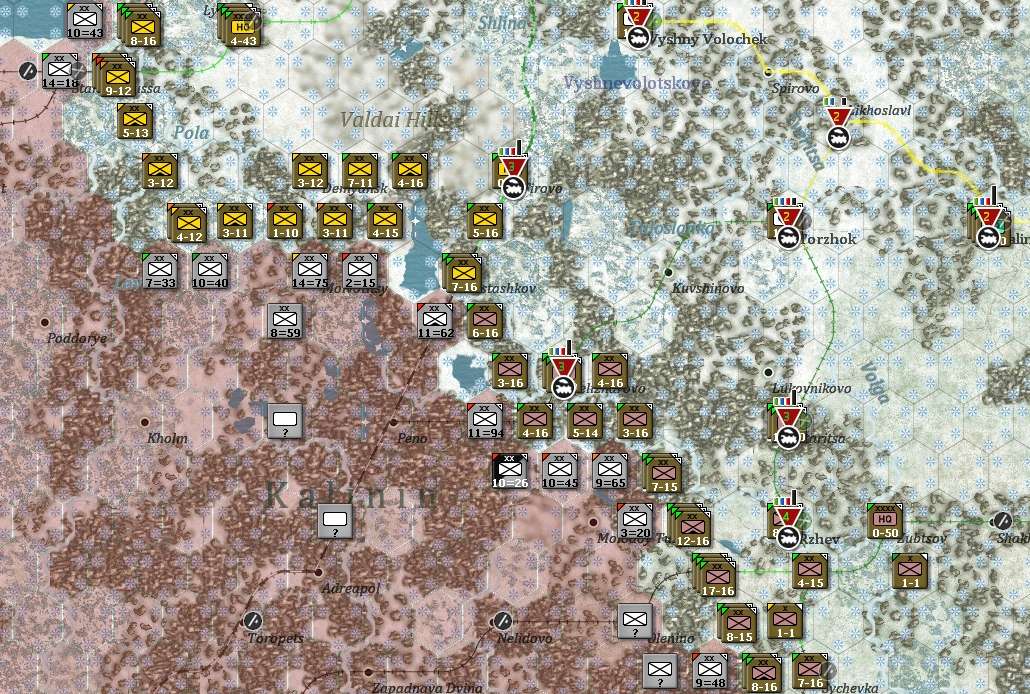
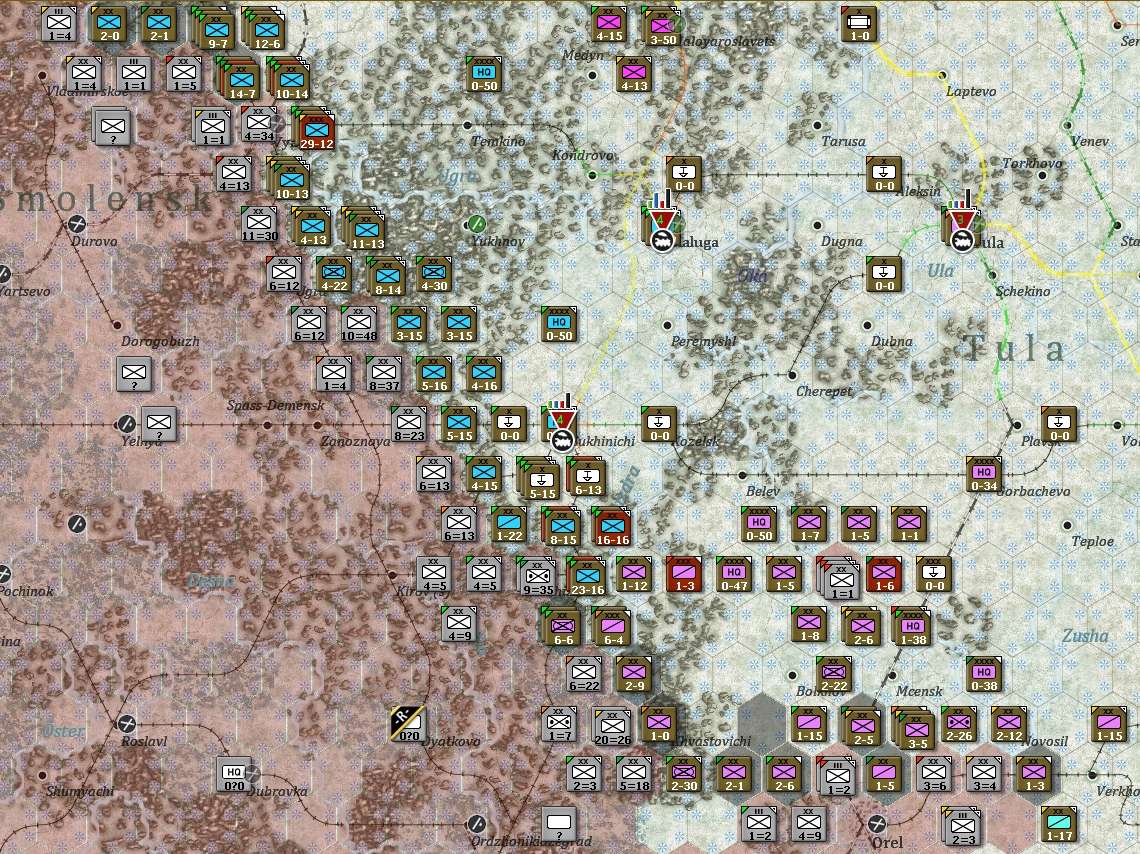
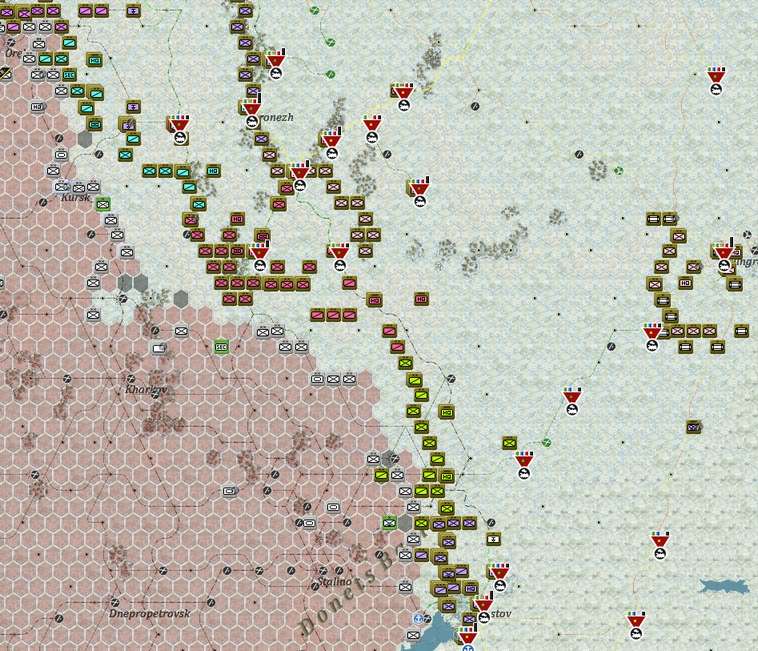
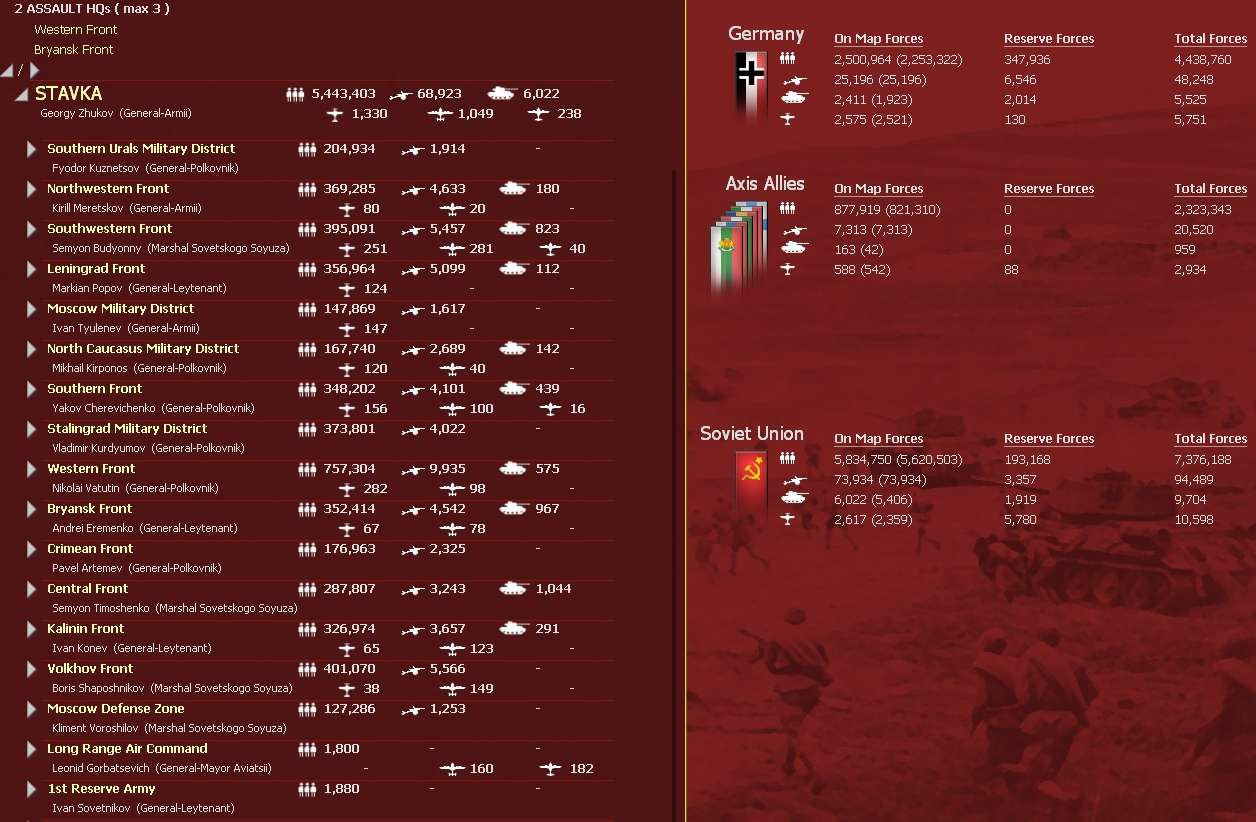

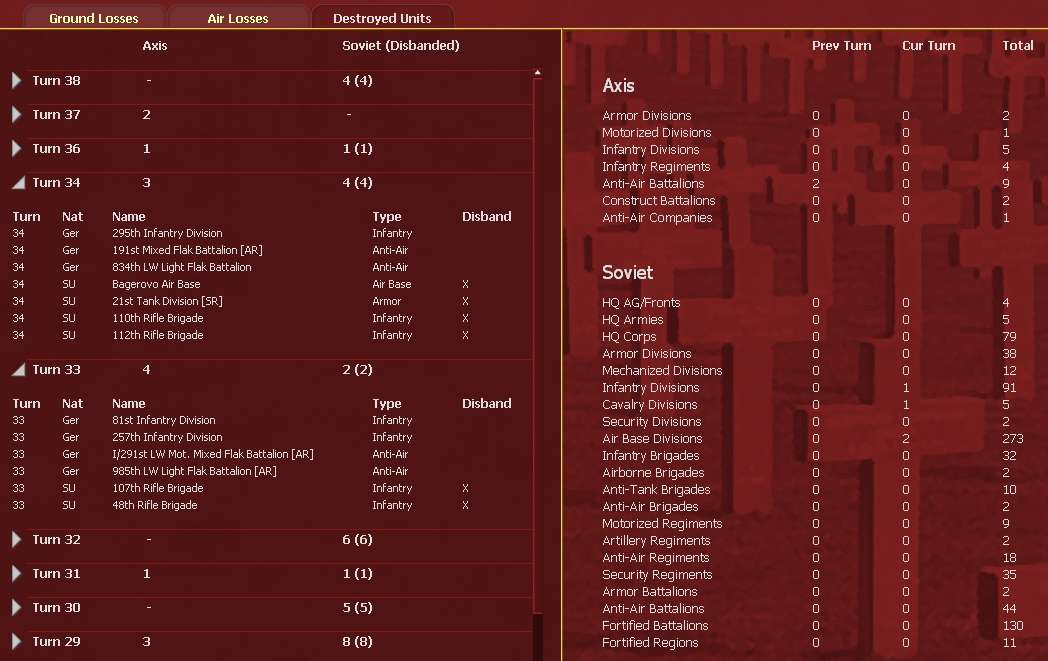

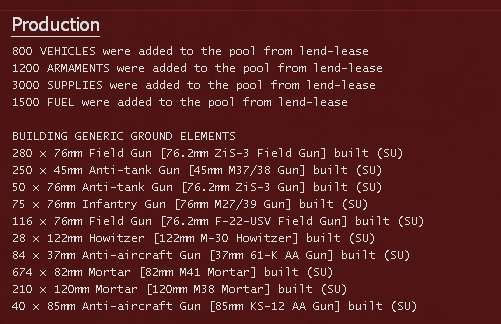




 !]
!]







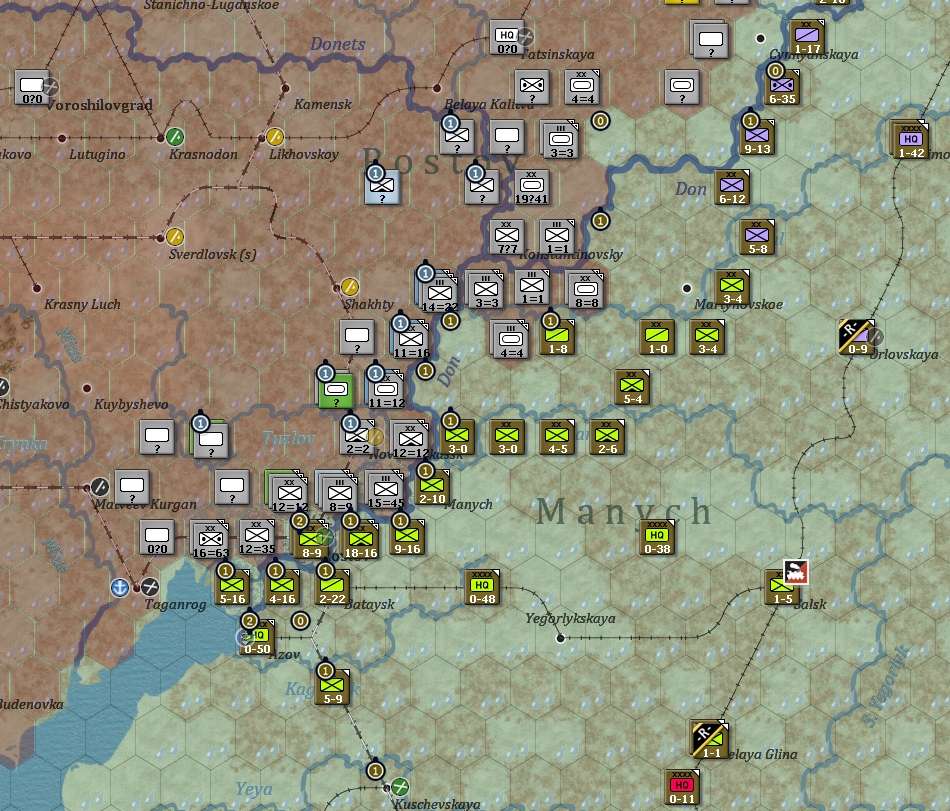

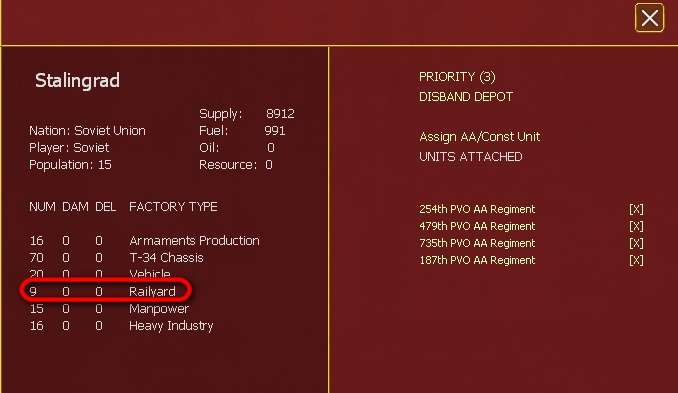
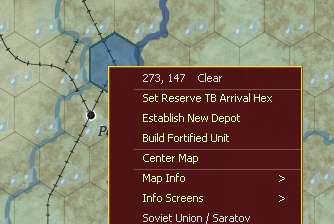

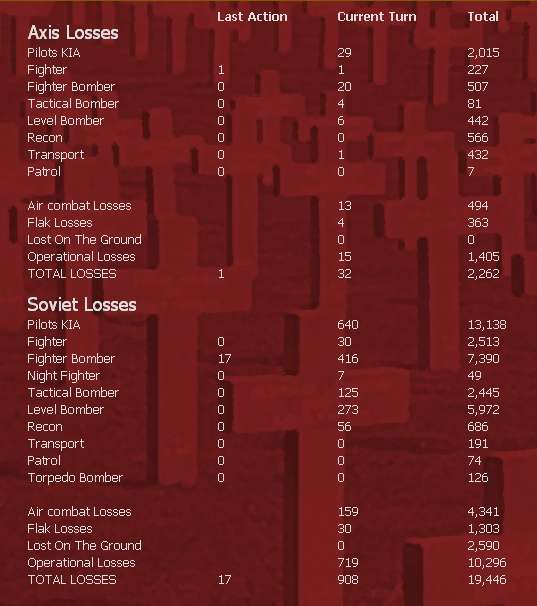


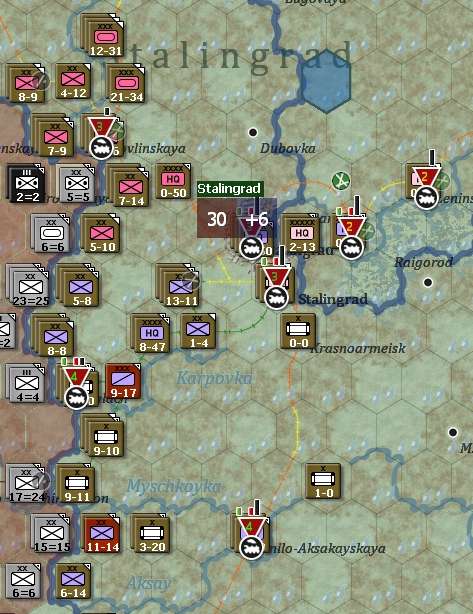

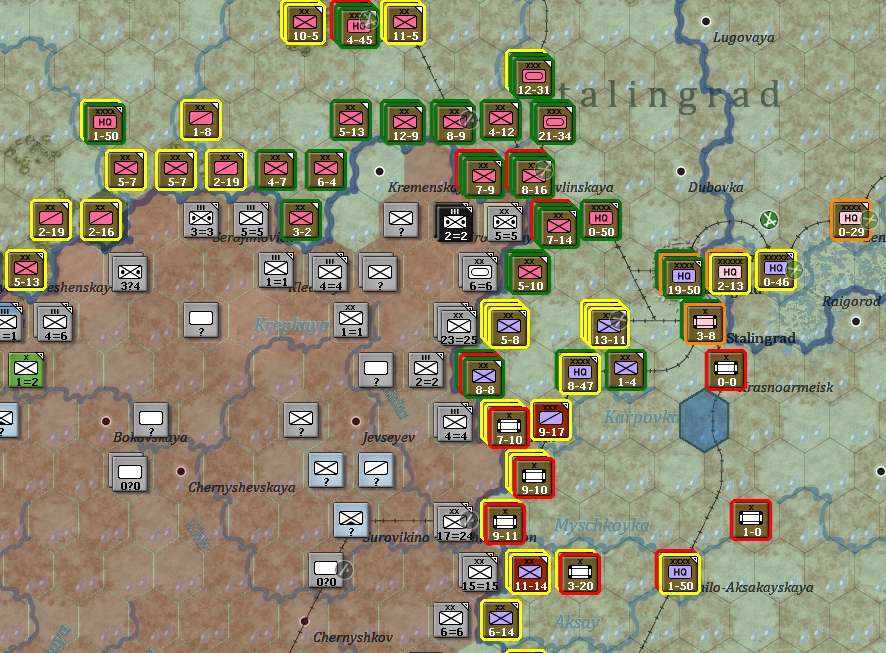



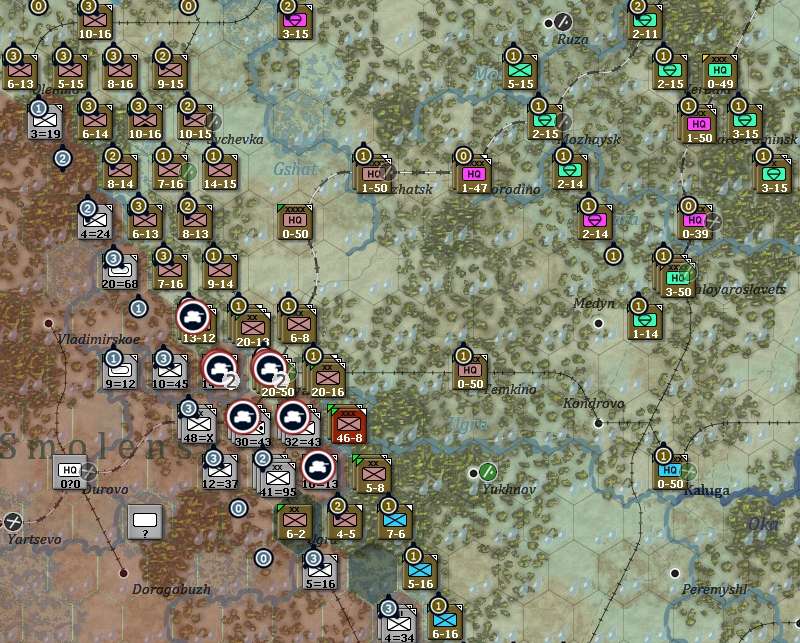
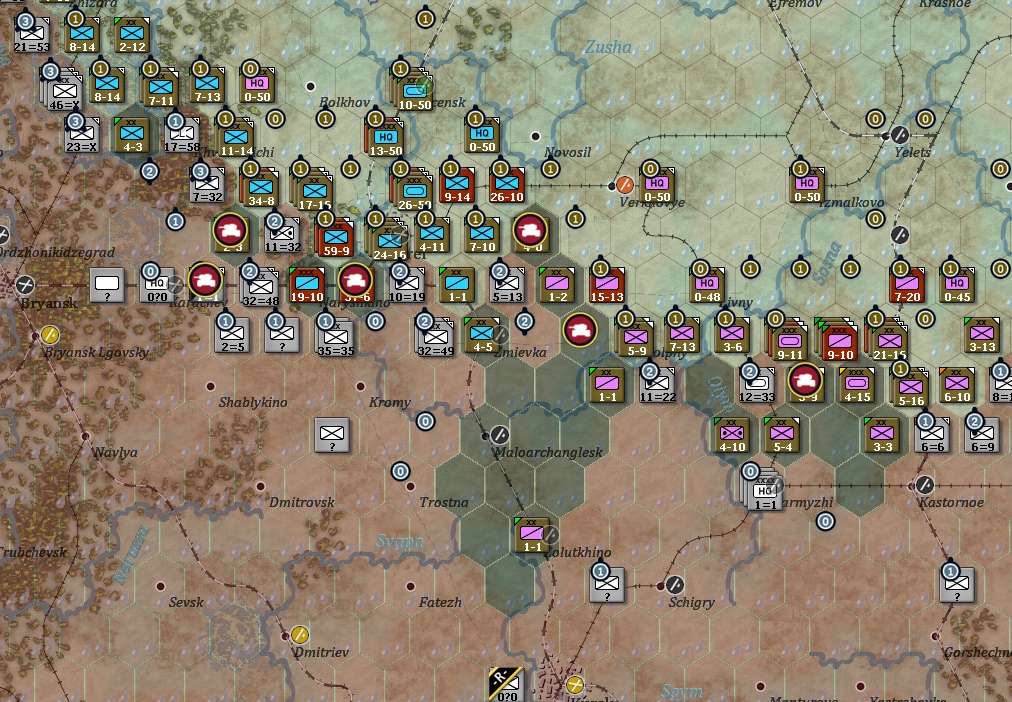
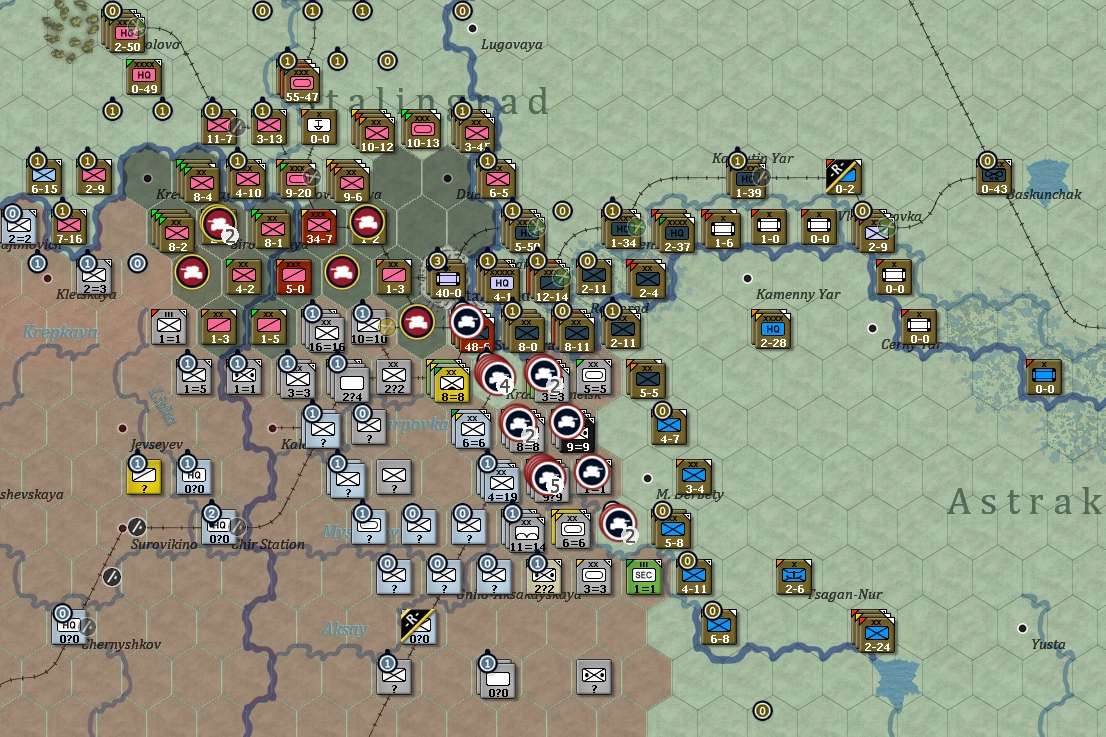
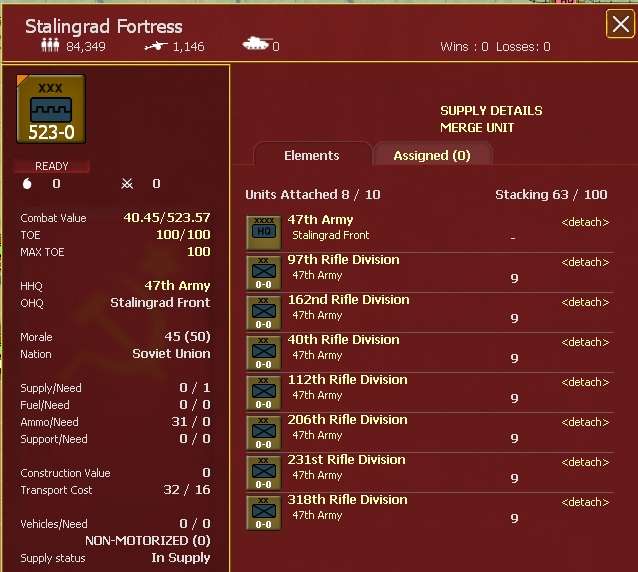
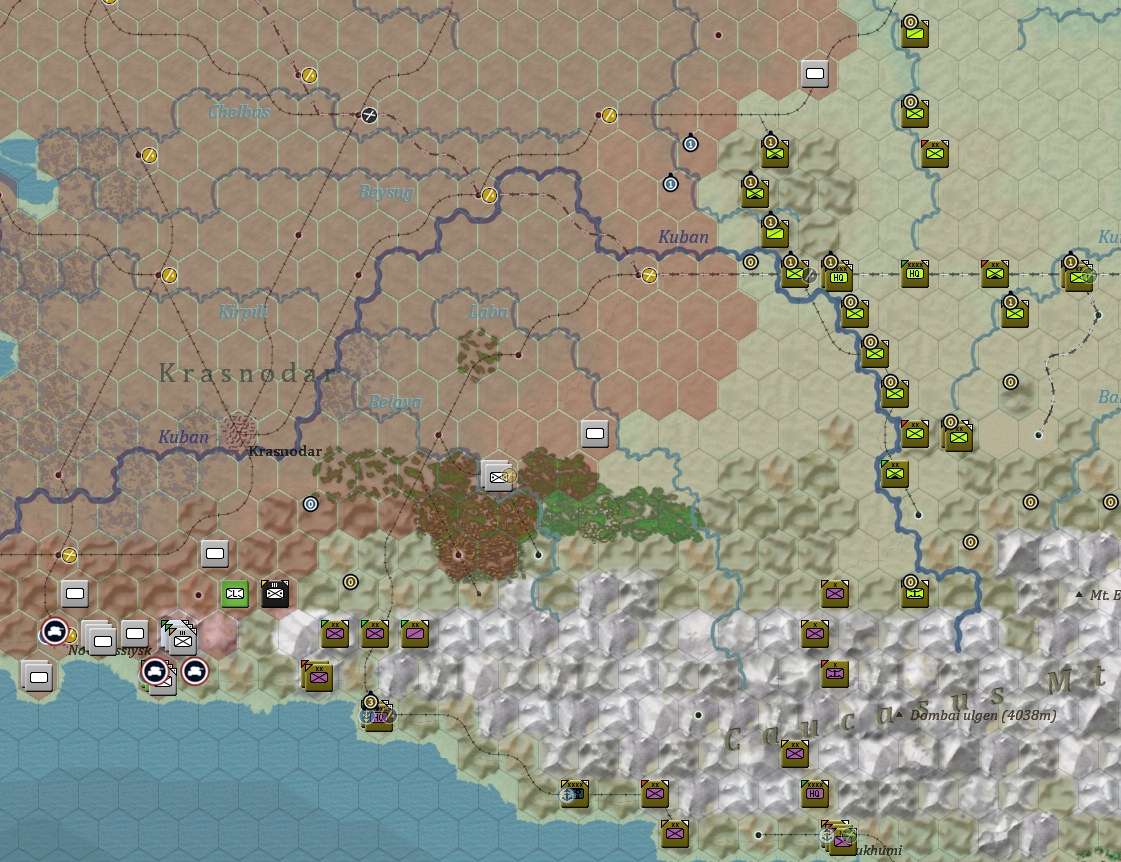
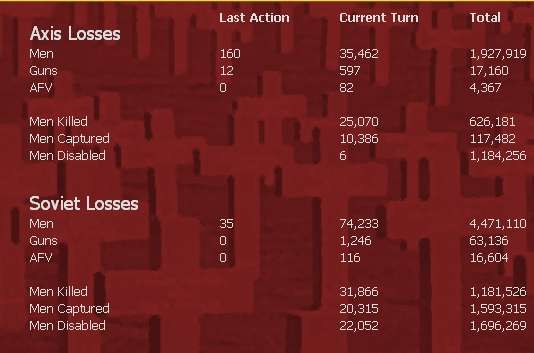
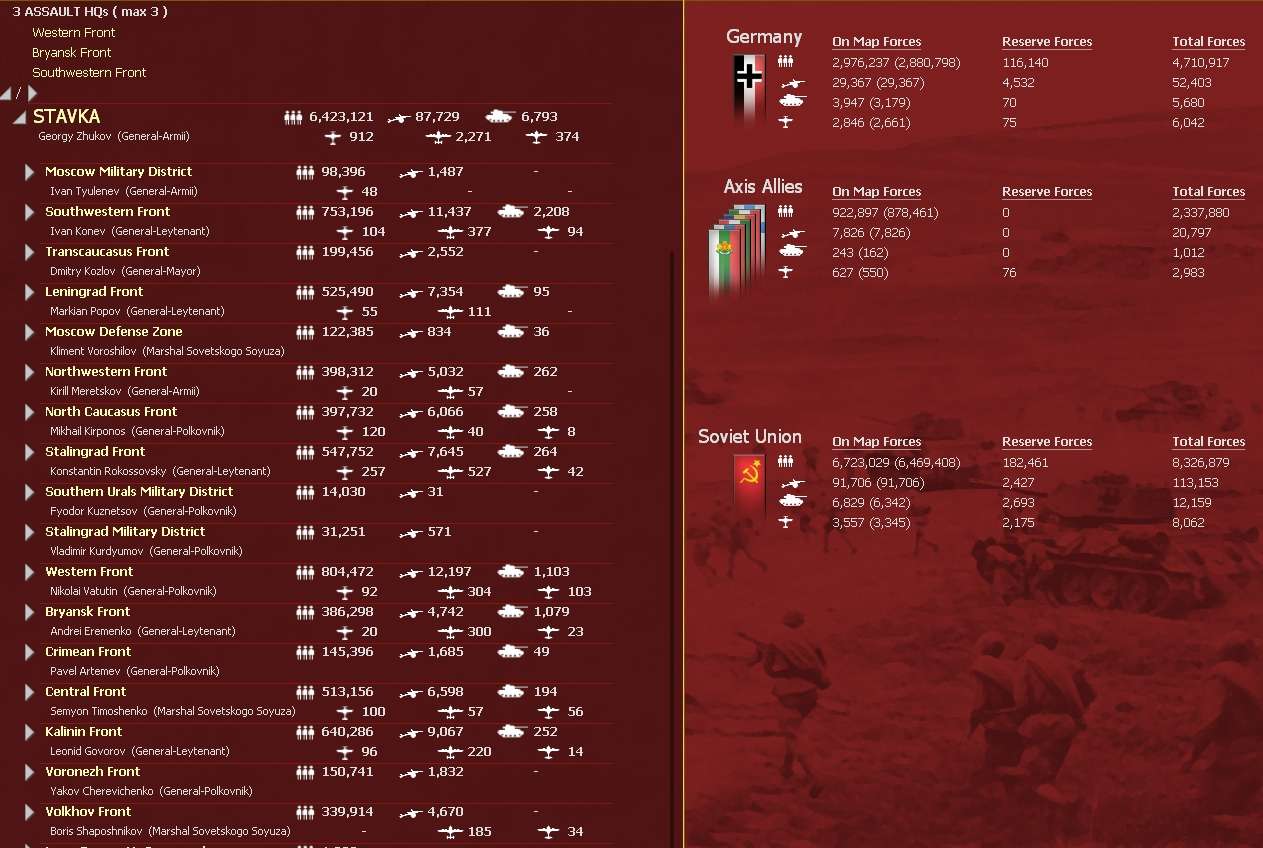
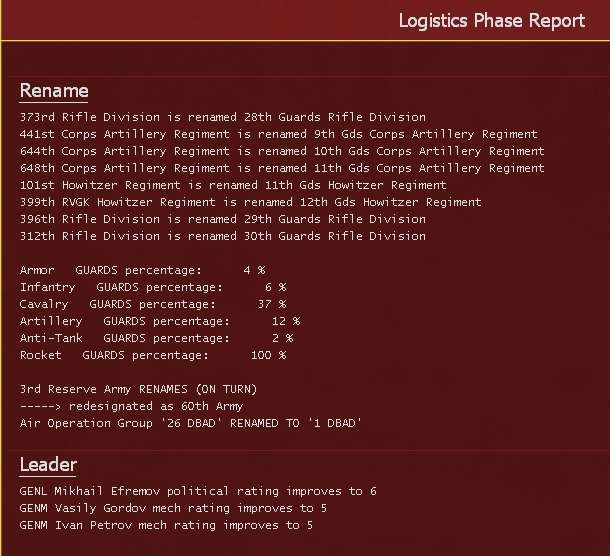
 New Messages
New Messages No New Messages
No New Messages Hot Topic w/ New Messages
Hot Topic w/ New Messages Hot Topic w/o New Messages
Hot Topic w/o New Messages Locked w/ New Messages
Locked w/ New Messages Locked w/o New Messages
Locked w/o New Messages Post New Thread
Post New Thread